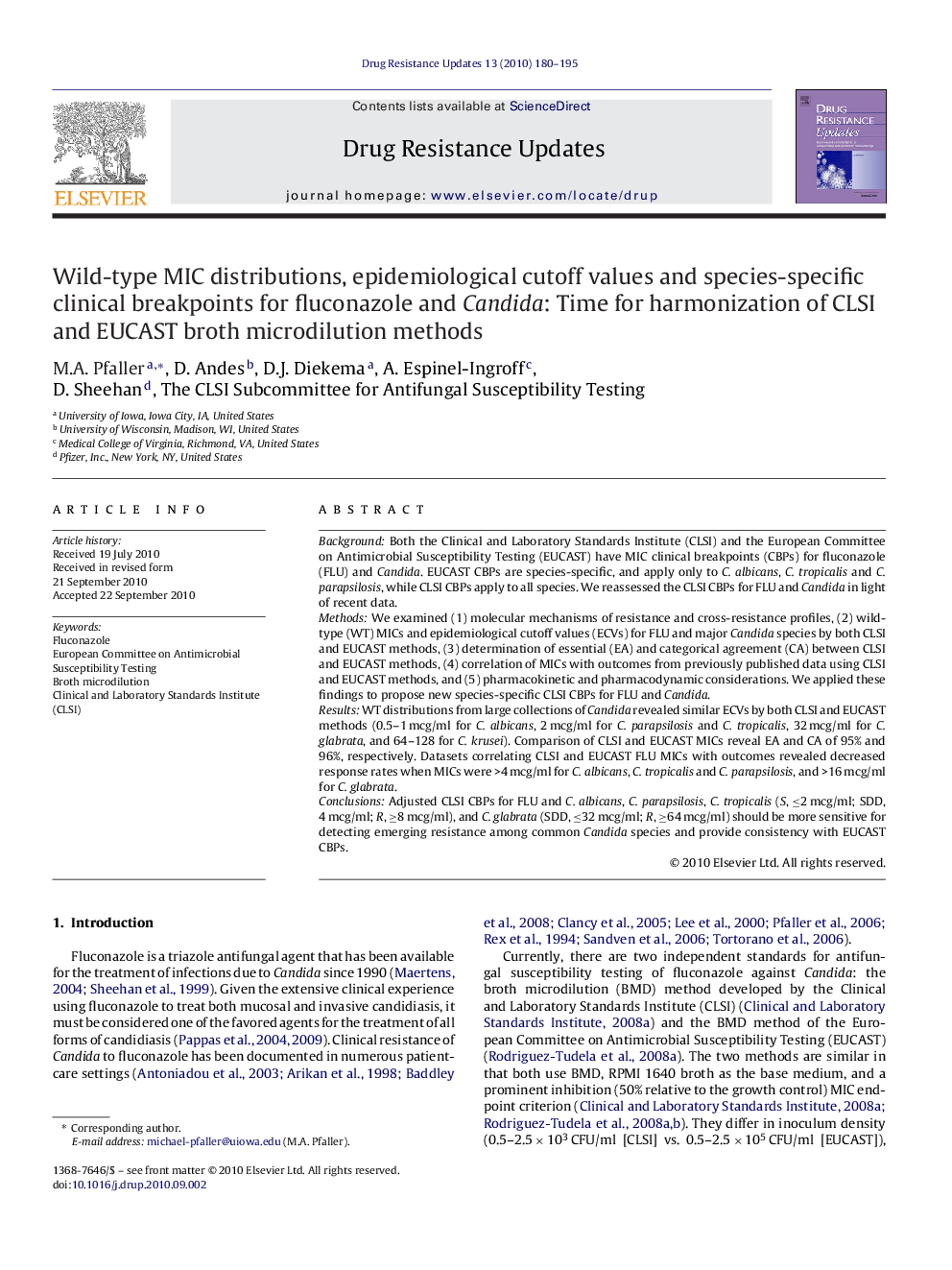| کد مقاله | کد نشریه | سال انتشار | مقاله انگلیسی | نسخه تمام متن |
|---|---|---|---|---|
| 2120477 | 1085699 | 2010 | 16 صفحه PDF | دانلود رایگان |

BackgroundBoth the Clinical and Laboratory Standards Institute (CLSI) and the European Committee on Antimicrobial Susceptibility Testing (EUCAST) have MIC clinical breakpoints (CBPs) for fluconazole (FLU) and Candida. EUCAST CBPs are species-specific, and apply only to C. albicans, C. tropicalis and C. parapsilosis, while CLSI CBPs apply to all species. We reassessed the CLSI CBPs for FLU and Candida in light of recent data.MethodsWe examined (1) molecular mechanisms of resistance and cross-resistance profiles, (2) wild-type (WT) MICs and epidemiological cutoff values (ECVs) for FLU and major Candida species by both CLSI and EUCAST methods, (3) determination of essential (EA) and categorical agreement (CA) between CLSI and EUCAST methods, (4) correlation of MICs with outcomes from previously published data using CLSI and EUCAST methods, and (5) pharmacokinetic and pharmacodynamic considerations. We applied these findings to propose new species-specific CLSI CBPs for FLU and Candida.ResultsWT distributions from large collections of Candida revealed similar ECVs by both CLSI and EUCAST methods (0.5–1 mcg/ml for C. albicans, 2 mcg/ml for C. parapsilosis and C. tropicalis, 32 mcg/ml for C. glabrata, and 64–128 for C. krusei). Comparison of CLSI and EUCAST MICs reveal EA and CA of 95% and 96%, respectively. Datasets correlating CLSI and EUCAST FLU MICs with outcomes revealed decreased response rates when MICs were >4 mcg/ml for C. albicans, C. tropicalis and C. parapsilosis, and >16 mcg/ml for C. glabrata.ConclusionsAdjusted CLSI CBPs for FLU and C. albicans, C. parapsilosis, C. tropicalis (S, ≤2 mcg/ml; SDD, 4 mcg/ml; R, ≥8 mcg/ml), and C. glabrata (SDD, ≤32 mcg/ml; R, ≥64 mcg/ml) should be more sensitive for detecting emerging resistance among common Candida species and provide consistency with EUCAST CBPs.
Journal: Drug Resistance Updates - Volume 13, Issue 6, December 2010, Pages 180–195